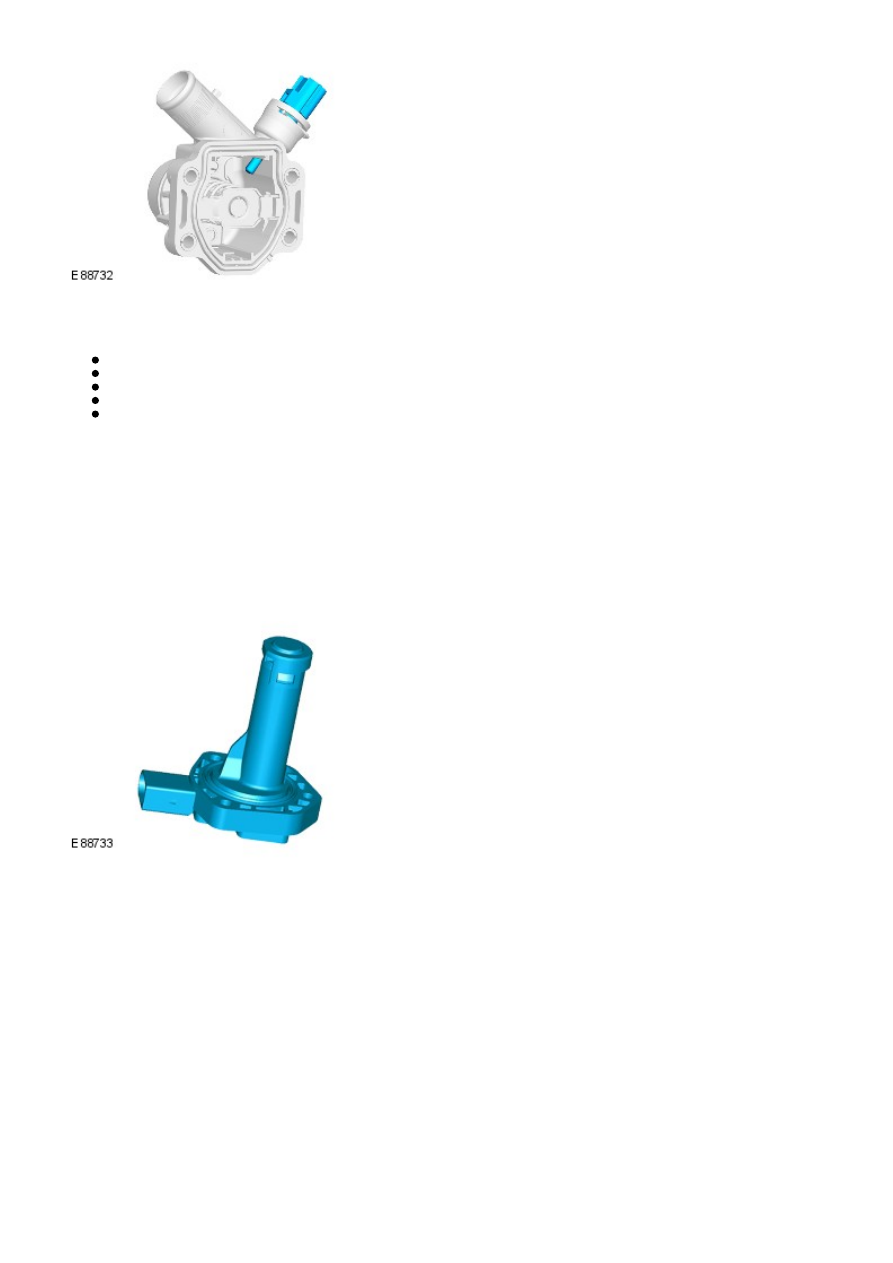Frelander 2. Manual - part 302

The ECT sensor is located in the thermostat housing, on the front of the engine, below the inlet manifold. The ECT sensor
is a thermistor type sensor used by the ECM to monitor the engine coolant temperature. The ECM uses the temperature
information for the following functions:
regulate the injection period
set engine idle target speed
control the engine cooling fan(s)
determine operation of the A/C compressor
determine operation of the purge valve and catalytic converter heating function.
The sensor is a Negative Temperature Co-efficient (NTC) thermistor element. The element resistance decreases as the
sensor temperature increases. The ECM supplies the sensor with a 5V reference voltage and a ground and measures the
returned signal as a temperature.
The ECT sensor is important to the correct running of the engine as a richer mixture is required at low engine coolant
temperatures for efficient starting and smooth cold running. As the engine coolant temperature increases, the ECM uses
the temperature signal from the sensor to lean off the fuel mixture to maintain optimum emissions and performance.
The ECM monitors the ECT sensor for faults and can store fault related codes. These can be retrieved using a Land Rover
approved diagnostic system. If the ECT sensor fails, the ECM uses a default value of 90°C (194°F). The electric fan control
module is sent a default coolant temperature value of 105°C (221°F) and switches the cooling fan on permanently.
Engine Oil Level/Temperature Sensor
The engine oil level/temperature sensor is located on the underside of the engine and is secured in the engine oil pan with
3 screws and is sealed with an O-ring seal. The ECM supplies the sensor with a 5V reference voltage and two wires supply
the temperature and oil level signals back to the ECM.
Two types of engine oil level/temperature sensor are used. On earlier models a capacitive oil level sensor is fitted and was
replaced by an ultrasound level sensor on later models. The principle of the temperature sensor is the same in both sensor
types. The sensors can be identified by differences in the sensor housings; the capacitive sensor has the electrical
connector moulded square to the base of the sensor, the ultrasonic sensor has the connector moulded at a slight angle to
the base of the sensor.
The ECM uses both the oil level and temperature signals to calculate the oil level. Temporary oil level changes caused by
hill driving or cornering are taken into account by the ECM using additional information such as vehicle speed and engine
load.
Engine Oil Level Sensor - Capacitance Type
The engine oil level sensor comprises two capacitive gauge elements. These measure the resistance to electrical current
passing through the engine oil.
There are two capacitors, one measuring the permittivity of the oil and a second with two plates set vertically measuring
the height. The second capacitor will have a proportion of oil and air between the plates and since the permittivity of air is
different to that of oil, the permittivity reading will change as the level of oil decreases and the air between the plate gap
increases. This permittivity reading is compared to that of the oil (taken by the first capacitor) and an oil level is derived.
Engine Oil Level Sensor - Ultrasound Type